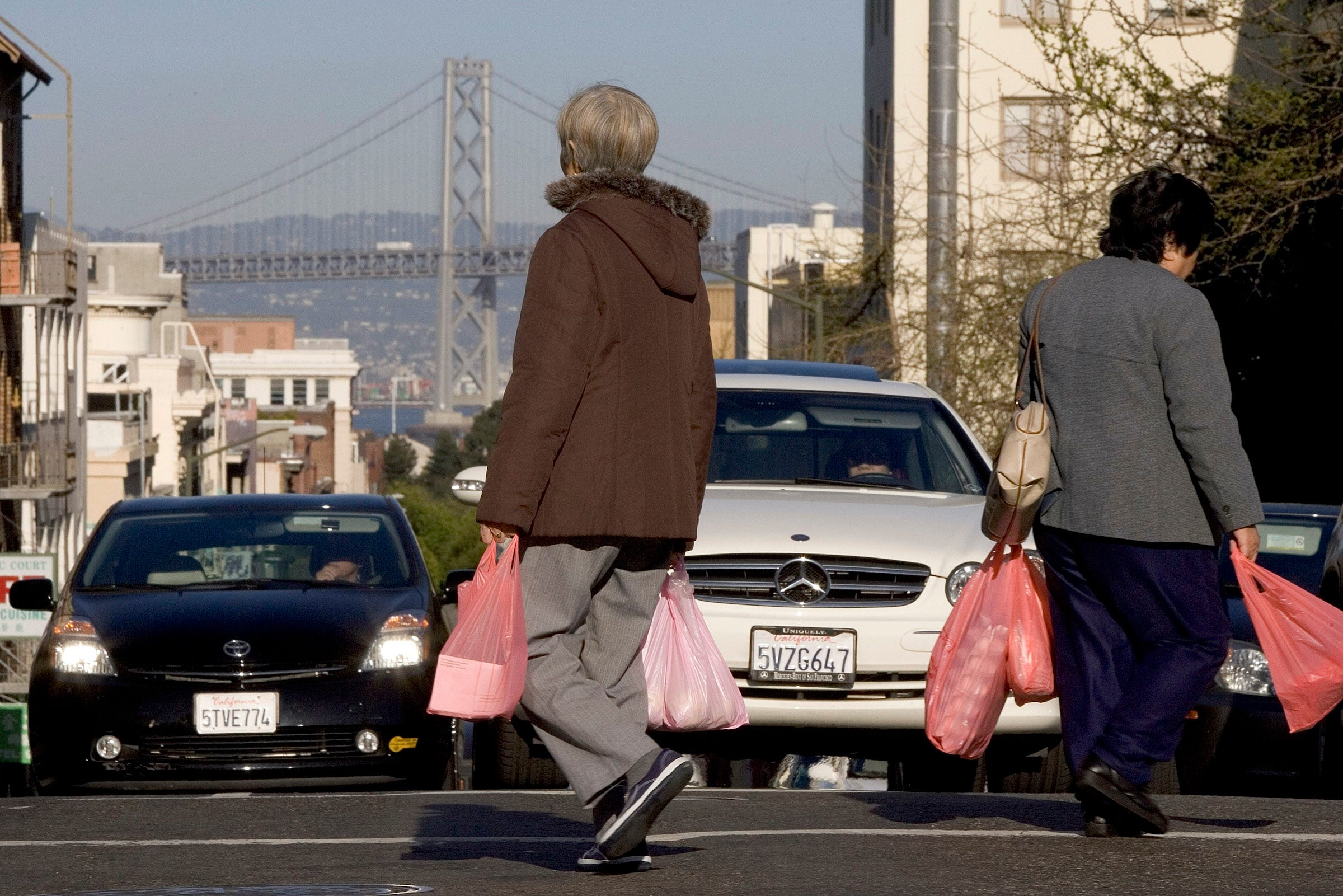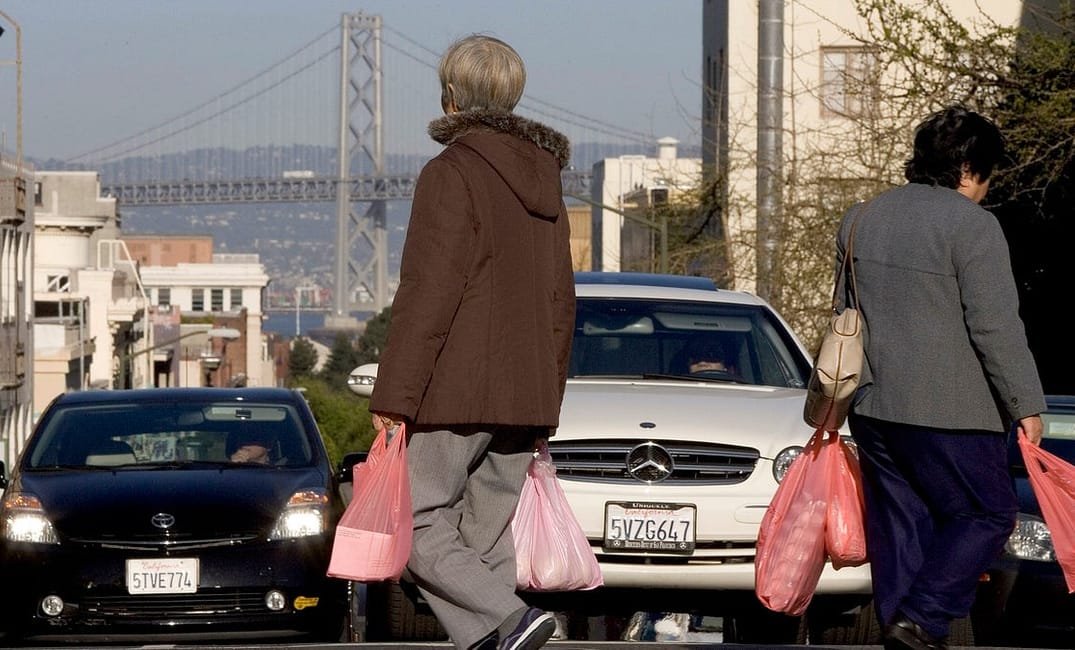
Recently, I went swimming in the San Francisco Bay. I dove in off the eastern shore of Berkeley as respite from the confines of sheltering in place. The water was choppy and visibility murky — plus my goggles kept fogging up — so I aimed myself at a distant outcropping of land and just kept swimming.
Then, something slimy hit my right shoulder and slid under my armpit.
With my next stroke, my left hand became wrapped in what felt like a sticky envelope with rough edges. Something sharp and slick slapped against my face and my feet and ankles got tangled in rope netting. I jerked my head up and found myself surrounded by a mass of floating debris and countless ragged bits of plastic.
Then I woke up.
This scene is a recurring nightmare I’ve been having for the past two months, since I started recreationally swimming in the open waters of the Bay. Each night, I dream that I swim straight into the Great Pacific Garbage Patch — a real thing, if you’re not familiar. This 87,000-metric-ton field of floating trash and sludge — full of chemical waste, debris, crates, containers, lids, ropes, nets, bottles, baskets, bags, and buoys — is located between California and Hawaii. Oceanographer Captain Charles Moore and his crew discovered it in 1997.
Sign up for The Bold Italic newsletter to get the best of the Bay Area in your inbox every week.
Surely, my nightmare is triggered by fears that arise from open water swimming — but it’s also rooted in fears that the fight against climate change is currently going backwards as we all consume way more single-use plastics during the coronavirus pandemic.
At first, I thought a silver lining to the Covid-19 pandemic could be the positive effect on the environment. With fewer vehicles on the road and planes in the air, as well as many environmentally unfriendly industries closed, greenhouse gas emissions are way down and air quality has improved.
Our consumption of plastic is a different story.
What was once bad for the environment, largely single-use plastic, has become a trade off for what we need to do to protect ourselves during the pandemic.
What was once bad for the environment, largely single-use plastic, has become a trade-off for what we need to do to protect ourselves during the pandemic. It’s a sad irony that our overuse of plastic trash will haunt our planet long after Covid-19 has left it.
Let’s start with the use of protective personal equipment (PPE): disposable masks, shields, and gloves, which are absolutely essential for controlling the spread of the virus. These all contain plastic and aren’t recyclable. Medical workers are going through them like crazy, as is the average person who is using disposable gloves and masks.
Then, there’s the increased use of single-use plastic cups, plates, containers, and cutlery that come with all the takeout food we are eating; the plastic bottles of hand sanitizer we all carry; the bubble wrap, plastic envelopes, and packaging in the many, many more deliveries we now receive.
Single-use plastics are having a resurgence. The Patch keeps growing.
Even plastics that can be recycled are running into trouble. Plastic recycling has almost hit a standstill during the pandemic as waste management companies grapple with how or if to sort potentially infected trash. The approach has been to avoid the risk and send the plastic to landfills. And as oil prices drop, so does the value of plastic. China, once the primary recycler of mixed paper and plastic from the U.S., is no longer in the market for it. Instead, the plastic we finally learned to place in our blue bins finds its way to the local landfills.
Of course, I can only do so much as an individual consumer. But I think we all carry responsibility for maintaining the planet. And I believe in the intrinsic value of small gestures. I bring my reusable bags every time I shop. A small gesture. It adds up.
The average U.S. household takes home over 1,500 plastic bags each year. Plastic bags are used for an average of 12 minutes but take 500 years to degrade in a landfill, and only a negligible fraction are recycled. The plastic doesn’t fully decompose, but breaks down into tiny pieces called microplastics, which pollute the sea and soil. In the ocean, the microplastics get eaten by aquatic life, potentially circling back into our food chain.
When we moved to Northern California in 2005, I saw more and more shoppers with reusable bags until it seemed like everyone had them. A couple years later, San Francisco banned single-use plastic bags; the entire state followed the ban in 2016. I felt good about the progress being made in California but knew the Patch continued to grow — in addition to the four other ocean garbage patches we know of: a second in the Pacific Ocean, two in the Atlantic Ocean, and one in the Indian Ocean.
When the pandemic first hit, I was asked to bag my own groceries if I wanted to use my canvas, reusable bags. On my next visit, I was asked to leave my reusable bags in the car but assured that the grocery store’s paper bags were free, no longer a 10-cent charge. On my third visit, Safeway had run out of paper bags and my groceries were placed in seven thin, single-use plastic bags.
Wait, they can’t use these, can they? But they can. In late April, California flipped the plastic bag ban, allowing them until Covid-19 is no longer a threat. My county and other states followed. Taking the reversal full circle, San Francisco and most Bay Area counties, like mine, full on banned reusable bags. Though, as we learn more about how the virus is transmitted, the city plans to allow shoppers to bring reusable bags again very soon, as long they bag their own groceries and products.
I wonder: How many of us will remember to pull out our reusable bags again once the pandemic is over? How long will it take to recommit to reducing and recycling plastic waste? How big will the Patches be by then?
How many of us will remember to pull out our reusable bags again once the pandemic is over? How long will it take to recommit to reducing and recycling plastic waste?
A grocery store clerk on a recent shopping trip suggested a simple, smart solution to avoiding plastic bags: She rang each item and placed them directly back in the cart. Back at my car, I transferred them to canvas bags on my own.
I expected to feel better about using the reusable bags again. But I’m starting to wonder, what’s the point? Why do I hang on to my canvas bag habit? Why do I hang on to this small gesture when the oceans’ trash Patches rapidly grow, the problem with plastic trash so large, seemingly insurmountable? Like with the pandemic, there doesn’t seem to be an end in sight. It’s all weighing me down.
But I realize that fighting to save our planet is still a series of small gestures we can control as individuals, like it’s always been, we just have to keep trying.







